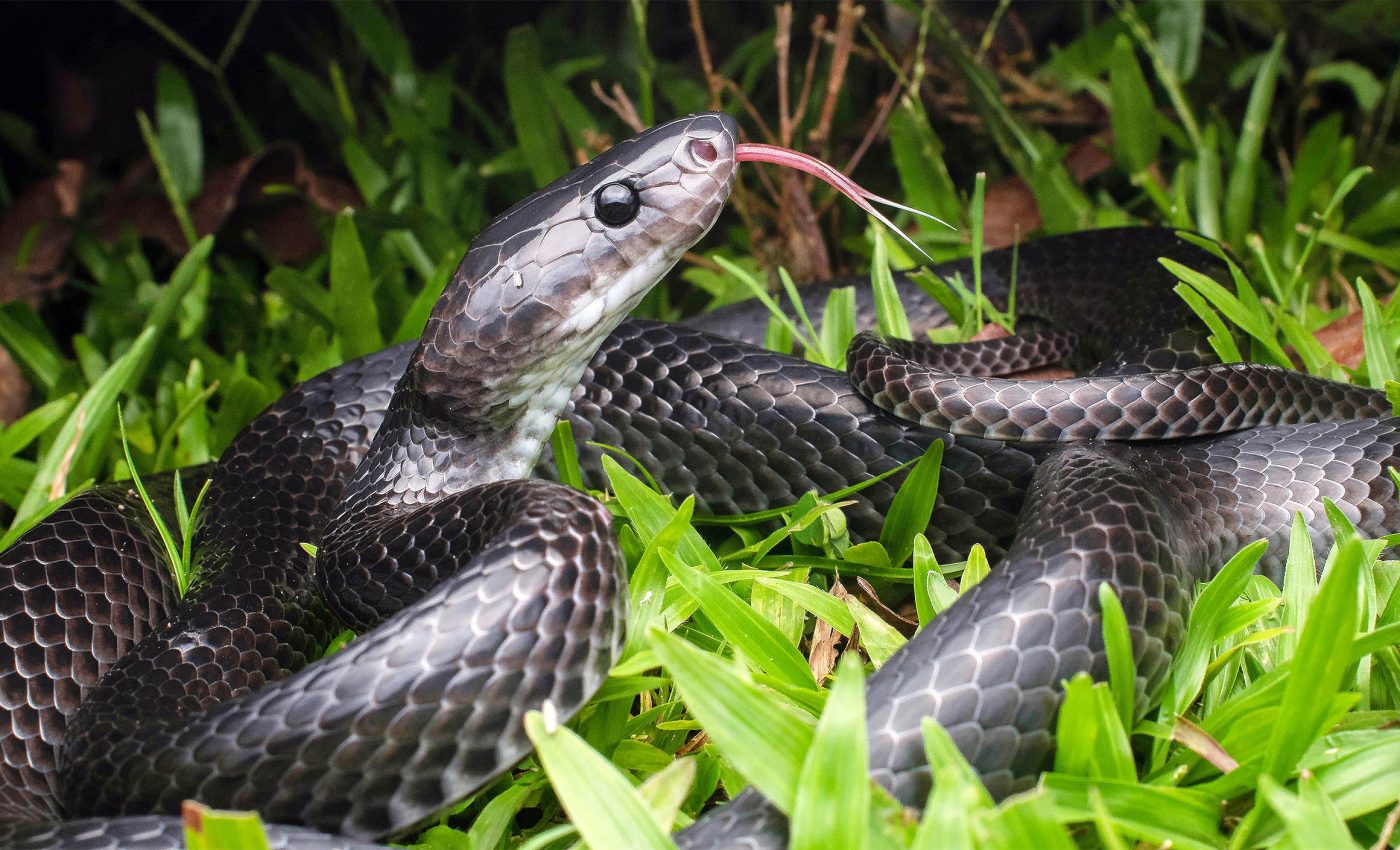
New wolf snake species named in honor of Steve Irwin
Scientists have discovered a new species of slender wolf snake on a remote island in India’s Nicobar archipelago.
Glossy black and growing to about 3 feet long, the snake has been named Irwin’s wolf snake. Its scientific name, Lycodon irwini, honors Australian conservationist Steve Irwin.
“His passion and dedication to wildlife education and conservation have inspired naturalists and conservationists worldwide, including the authors of this paper,” wrote the researchers.
Distinguishing the new species
Lycodon irwini turned up during herpetological surveys on Great Nicobar Island, where only a handful of specimens had ever been seen.
The experts used detailed measurements, old museum specimens, and DNA sequences to prove it is distinct from all other wolf snakes studied.
The work was led by R.S. Naveen, a herpetologist at Pondicherry University. His research focuses on the snakes and other reptiles of the Nicobar and Andaman Islands.
Features of Irwin’s wolf snake
Adults of Irwin’s wolf snake have slim bodies, long tapering tails, and smooth, glossy scales. They belong to the colubridae – a large family of snakes that includes many familiar backyard species.
Most wolf snakes in the genus Lycodon are small, nocturnal hunters with pale bands. However, Irwin’s wolf snake is almost entirely jet black.
Taxonomists now recognize about 74 Lycodon species across Asia, making this one of the continent’s most species-rich snake groups.
Rare species found on islands
Great Nicobar sits in the Bay of Bengal and forms part of a biodiversity hotspot. A global review found that islands make up only about seven percent of Earth’s land yet hold roughly 20 percent of species.
Field biologists have shown that several Nicobar reptiles are endemic, found naturally in only this small island group.
Work on a new dwarf gecko from these islands showed how an overlooked lineage can hide in collections for decades before being recognized.
Incomplete picture of island wildlife
Great Nicobar’s interior is covered in dense, moist evergreen forest. There are tall trees, tangled vines, and heavy rainfall that feeds many small streams.
These forests shelter reptiles, birds, mammals, and invertebrates that often live in very narrow habitat slices.
For some Nicobar snakes and lizards, scientists still rely on one or two museum specimens collected many years ago.
Irwin’s wolf snake now joins that list of rarely seen species, reminding researchers how incomplete their picture of the islands remains.
Confirming the new wolf snake
For decades, herpetologists treated the Nicobar wolf snake as a population of Lycodon subcinctus, a widespread Southeast Asian species.
Recent studies of that group suggested, however, that the Nicobar form might be distinct. So Naveen’s team searched the island for specimens to test the idea.
The researchers examined three females, including the original museum specimen. They took precise measurements of head shape, tail length, and many rows of scales. This focus on morphology revealed several traits that did not match any known relative.
The Nicobar snake sometimes has a small scale in front of the eye and a slightly different arrangement of head shields. It also lacks the white body bands of some close relatives and has more belly and tail scales than those species.
To check the genetic picture, the team sequenced mitochondrial DNA, along with one nuclear gene. They found about 6 percent difference in a key gene, a split also seen between many reptile species in a barcoding survey.
Protecting Irwin’s wolf snake
All known records of Irwin’s wolf snake come from moist, evergreen forest on Great Nicobar. This includes three collected individuals and one carefully documented sighting.
Such sparse evidence suggests a naturally scarce or highly secretive lifestyle, where even expert survey teams may miss many individuals.
The team used the IUCN Red List, a global system that ranks extinction risk for species, to judge the snake’s conservation status. They proposed that it warranted an Endangered status.
This follows the Red List criteria for species with tiny ranges, small populations, and evidence of ongoing habitat loss.
Vulnerable species on islands
Island species with small distributions are especially vulnerable. One cyclone, tsunami, or road project can wipe out much of their habitat.
Irwin’s wolf snake, confined so far to evergreen forest on a single island, fits that pattern all too well.
A recently proposed Great Nicobar infrastructure project includes a port, airport, power plant, and new town. Such development would replace large areas of native forest.
Any long road or industrial corridor through these forests would carve up the habitat where Irwin’s wolf snake is currently known.
Protection of intact forests
The story of Lycodon irwini highlights the power of modern taxonomy to reveal cryptic diversity, hidden species that standard fieldwork easily overlooks.
Tools such as DNA analysis, classic measurements and museum work, are key. This approach is now showing that many island reptiles that were once lumped together belong to separate evolutionary lineages.
Islands have already seen a disproportionate share of recent animal extinctions. Thus, every new species discovery adds urgency to protecting the last intact forests.
On Great Nicobar, that means making room for creatures like Irwin’s wolf snake, alongside any plans for ports, airports, or tourism ventures.
The role of Irwin’s wolf snake
This species is nonvenomous and eats small reptiles, amphibians, and mammals. Significantly, it sits in a food web that helps keep island ecosystems stable.
Giving the snake Steve Irwin’s name may make people pause before fearing it and may draw attention to lesser known conservation stories.
“New species continue to be discovered, exemplified by Lycodon irwini,” the researchers wrote.
For this black island snake, the next chapter depends on how quickly people act to protect the forests and streams it calls home.
The study is published in the journal Evolutionary Systematics.
—–
Like what you read? Subscribe to our newsletter for engaging articles, exclusive content, and the latest updates.
Check us out on EarthSnap, a free app brought to you by Eric Ralls and Earth.com.
—–













